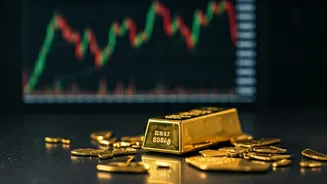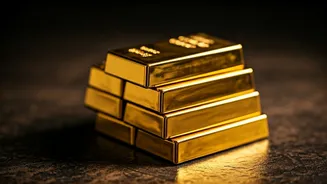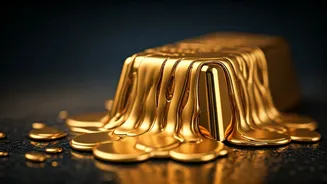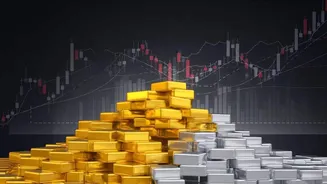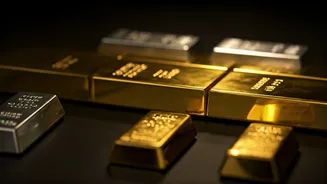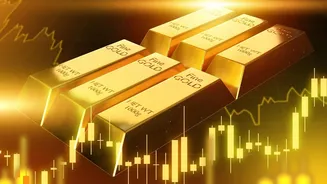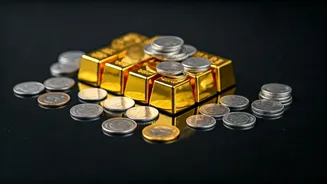The Precipitous Fall
Gold prices recently experienced a severe decline, marking the steepest single-day drop since 2013. The precious metal's value fell by over 5%, a considerable
decrease in the investment world. Simultaneously, silver also witnessed a considerable drop, plunging by 7%. This dual decline signals a significant shift in market sentiment. The factors influencing these price movements are multifaceted, with investors reassessing their strategies and reacting to various economic indicators. This represents a period of heightened volatility, prompting both seasoned investors and newcomers to carefully monitor market dynamics. The widespread impact of this fall extended beyond the immediate market, influencing broader financial landscapes and investment strategies across the board.
Decoding the Drop
Several converging factors contributed to the recent gold price crash. One key driver was the strengthening of the US dollar. As the dollar becomes more robust, gold, which is priced in dollars, becomes more expensive for holders of other currencies, leading to decreased demand and potential selling pressure. Another crucial factor included expectations surrounding interest rates. With the prospect of rising interest rates, bonds and other fixed-income investments become more attractive, drawing capital away from gold. Furthermore, economic data releases, such as inflation figures and employment numbers, played a vital role in shaping market perceptions and investor behavior. When these data points suggest a strong economy and potential rate hikes, gold's appeal often wanes. Increased risk appetite among investors, which prompts them to move funds into riskier assets, further fueled this downturn.
Silver's Significant Plunge
The significant decline in silver prices mirrored the trend observed in gold, with the white metal experiencing its own steep fall, plummeting by 7%. Silver, often considered a sister metal to gold, tends to move in tandem with its more illustrious counterpart. However, silver's volatility is typically higher due to its dual role as both an investment asset and an industrial commodity. The extent of silver's drop reflects the broader market dynamics and investor sentiment. Silver's price sensitivity is amplified due to its use in various industrial applications, such as electronics and solar panels. This dual function means that any downturn in industrial demand, alongside broader market concerns, amplifies the downward pressure on silver prices.
Forecast and Outlook
The question on every investor's mind is whether gold prices will plunge further or experience a rebound. The answer is not straightforward, as multiple variables come into play. Several analysts suggest that the extent of the future price movements will largely depend on the performance of the US dollar, the trajectory of interest rates, and the evolving economic landscape. Potential factors that could support a gold price recovery include renewed concerns about inflation, geopolitical uncertainties, and a decline in the US dollar. Conversely, persistent economic strength, rising interest rates, and a further strengthening of the dollar may continue to put downward pressure on gold. Ultimately, the outlook for gold remains uncertain, and investors are advised to carefully assess market trends, economic indicators, and their own risk tolerance when making investment decisions.



